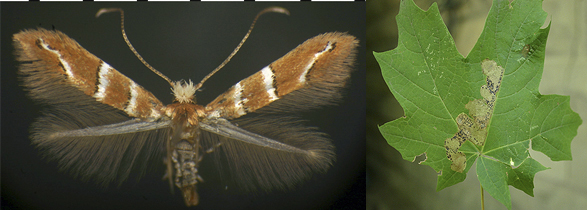
Figure 1. Cameraria aceriella. Adult, and leaf mine on sugar maple, Acer saccharum (Sapindaceae).
Larvae of Cameraria species make flat upperside blotch leaf mines on woody plants. The mines of most species are initially yellowish, but they often take on a brown color later in development. Adults of Cameraria most usually have rust-colored forewings, each with one or more transverse white bands that are bordered with black on the apical (outside) margin, in contrast to Phyllonorycter, in which the white markings of the forewing are bordered with black on the basal (inside) margin. Quite a number of Cameraria species occur in Illinois.
Cameraria aceriella (Fig. 1) has been reared from sugar maple, Acer saccharum (Sapindaceae) in Illinois (active leaf mines in late July and early August). According to Braun (1908), it feeds predominantly on red maple, Acer rubrum, in the Atlantic states.

Figure 1. Cameraria aceriella. Adult, and leaf mine on sugar maple, Acer saccharum (Sapindaceae).
Cameraria saccharella (Fig. 2) likewise feeds on sugar maple in Illinois, at the same time as C. aceriella. The leaf mines of these two species are very similar.
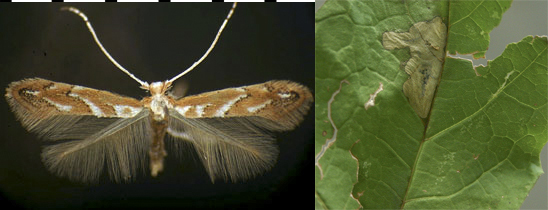
Figure 2. Cameraria saccharella. Adult, and leaf mine on sugar maple, Acer saccharum (Sapindaceae).
Cameraria guttifinitella (Fig. 3) forms a yellow blotch mine on the leaf of poison ivy, Rhus radicans (Anacardiaceae); mines can be seen from July into October, indicating more than one generation per year. Often, two or more mines occur on a single leaf, so that, by the completion of larval development, almost the entire surface of the leaf is mined.
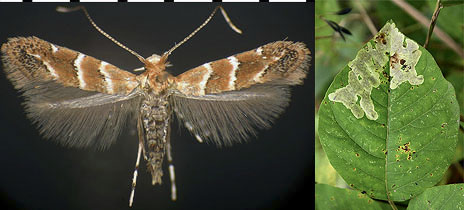
Figure 3. Cameraria guttifinitella. Adult, and leaf mine on poison ivy, Rhus radicans (Anacardiaceae).
Cameraria caryaefoliella (Fig. 4) feeds on hickory, Carya sp. (Juglandaceae).
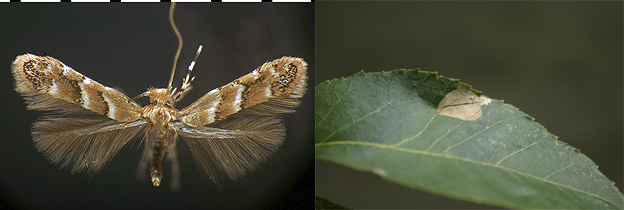
Figure 4. Cameraria caryaefoliella. Adult, and leaf mine on hickory, Carya sp. (Juglandaceae).
Cameraria aesculisella (Fig. 5) makes an upperside blotch leaf mine on Ohio buckeye, Aesculus glabra (Sapindaceae). The larva matures in early June; there appears to be one generation per year.
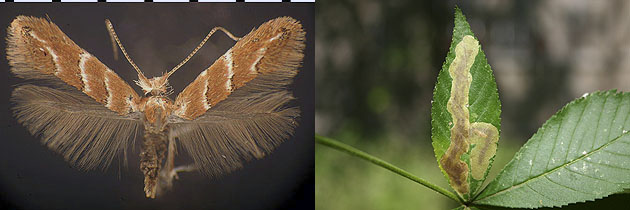
Figure 5. Cameraria aesculisella. Adult, and leaf mine on Ohio buckeye, Aesculus glabra (Sapindaceae).
Cameraria ostryarella (Fig. 6) feeds on hop hornbeam, Ostrya virginica (Betulaceae) and occasionally on the closely-related ironwood, Carpinus caroliniana (Betulaceae). The mine remains a flat blotch throughout its entire development, and its upper wall is yellowish (often becoming quite brown in the late stages) and so thick that it is fairly opaque. This makes it easy to distinguish from the mine of the Ostrya-feeding Phyllonorycter tritaenianella, which becomes tentiform in its late stages, and in which the upper wall during the flat-blotch stage is white and markedly thin.
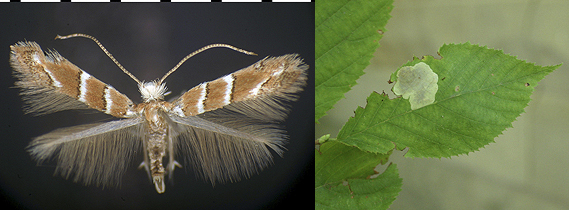
Figure 6. Cameraria ostryarella. Adult, and leaf mine on hop hornbeam, Ostrya virginica (Betulaceae).
Cameraria conglomeratella (Fig. 7) is a leaf miner on oaks, Quercus spp. (Fagaceae), including white oak, Q. alba. The leaf mine in the photo was collected in late July, with the moth emerging in early August.
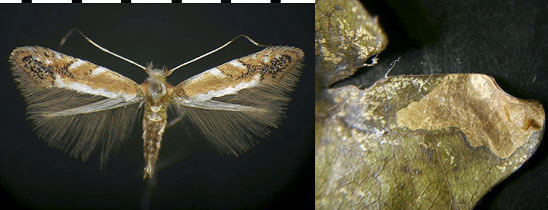
Figure 7. Cameraria conglomeratella. Adult, and leaf mine on white oak, Quercus alba (Fagaceae).
As with C. conglomeratella above, the larva of Cameraria platanoidiella (Fig. 8) is a leaf miner on several species of oak, including white oak, Quercus alba, in a mine identical to that of the next species, C. hamadryadella. Mines of these two species often occur on the same leaf.
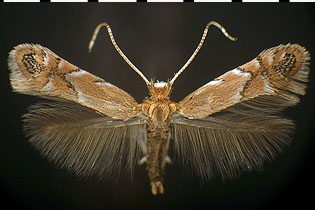
Figure 8. Cameraria platanoidiella. Adult, reared from leaf mine on white oak, Quercus alba (Fagaceae).
As does C. platanoidiella above, Cameraria hamadryadella (Fig. 9) feeds on oaks, including white oak, Quercus alba. The coloration of the adult is somewhat atypical for the genus.

Figure 9. Cameraria hamadryadella. Adult, and leaf mine on oak, Quercus sp. (Fagaceae).